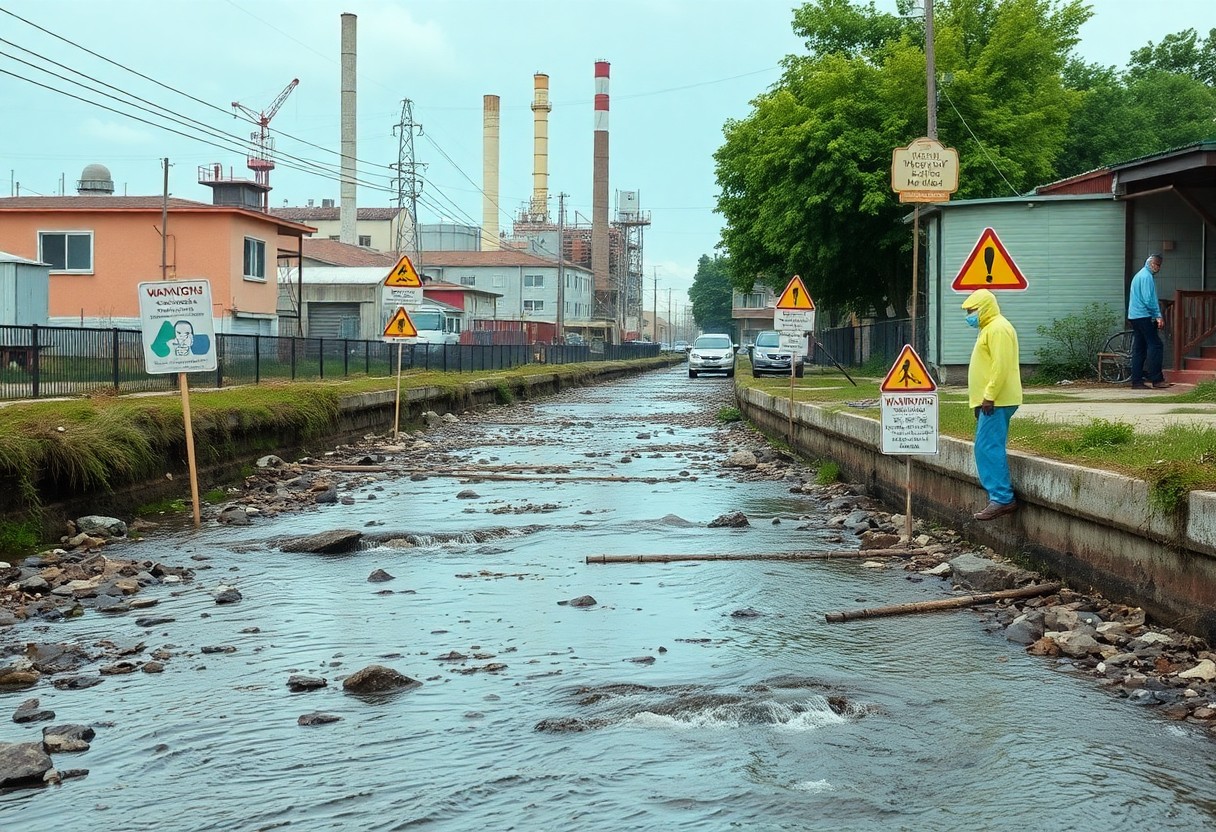Environmental concerns surrounding PFAS, commonly known as the “Forever Chemicals,” are becoming increasingly relevant to you and your community. These substances are notorious for their long-lasting presence in the environment and in your body, raising alarm over potential health impacts. Understanding the implications of PFAS can empower you to make informed decisions regarding your water, food, and overall health. In this post, we will explore why the term “Forever Chemicals” is significant and what it means for you and your loved ones.
Understanding PFAS
For many, the term PFAS may seem unfamiliar, but it refers to a group of synthetic chemicals that have become a significant environmental concern. Known as per- and polyfluoroalkyl substances, PFAS are notorious for their resilience and persistence in the environment, which is why they are often dubbed “forever chemicals.” Their discovery dates back to the 1930s, and they are found in various industrial and consumer products you might use daily.
Definition and Composition
Before delving into the implications of PFAS, it’s crucial to understand what these compounds are. PFAS encompass a wide range of almost 5,000 man-made chemicals characterized by strong carbon-fluorine bonds. This unique composition allows them to repel water and oil, making them valuable in various applications, from food packaging to firefighting foams.
Common Sources of PFAS
An array of everyday items contributes to PFAS exposure, which you may not recognize immediately. They are commonly found in non-stick cookware, waterproof clothing, stain-resistant fabrics, and even some food packaging.
With this wide distribution, your exposure to PFAS may stem from many household and industrial sources. Restaurants may use PFAS-laden food packaging, while water-soluble formulations in cleaning and firefighting agents present risks as well. Contaminated drinking water supplies can also expose you to harmful levels of these chemicals. Being aware of these common sources can help you make more informed choices about the products you use and their potential impact on your health and the environment.
Health Impacts of PFAS
While the full extent of PFAS health impacts continues to be explored, evidence suggests that prolonged exposure to these chemicals may be linked to a range of serious health issues. These include hormonal disruptions, immune system effects, and increased risks of certain cancers. Understanding these implications is vital for you as you navigate daily life in environments that may contain PFAS.
Potential Health Risks
Before you dismiss the health concerns surrounding PFAS, it’s vital to recognize that studies indicate potential risks such as liver damage, developmental issues in children, and increased cholesterol levels. The evidence is strong enough to warrant caution when it comes to PFAS exposure.
Vulnerable Populations
PFAS exposure can disproportionately affect certain groups, putting them at greater risk for adverse health effects. This includes pregnant individuals, infants, and those with pre-existing health conditions. These vulnerable populations may experience more significant health challenges, making it important for you to remain aware of potential sources of exposure.
Populations such as children and pregnant individuals are particularly at risk due to their developing systems, which may be more vulnerable to toxic substances. Additionally, individuals with pre-existing health conditions could experience heightened effects from PFAS exposure. Understanding these risks can empower you to take proactive steps in reducing your exposure and advocating for necessary protections in your community.
Environmental Concerns
Now, the environmental implications of PFAS are alarming, as these substances pose significant risks to ecosystems and human health. With widespread use in products ranging from firefighting foams to water-resistant coatings, PFAS contamination has become prevalent. Their unique chemical properties lead to persistence in the environment, making remediation efforts complex and expensive.
Persistence in the Environment
To understand the dangers of PFAS, you must recognize their extraordinary ability to resist degradation. These chemicals can remain in soil and water systems for decades, accumulating over time and complicating remediation efforts. This lasting presence raises concerns about long-term exposure for both wildlife and humans.
Contamination of Water Sources
Above all, PFAS contamination of water sources presents a significant threat to public safety.
Due to their widespread use and persistence, PFAS can infiltrate drinking water supplies, putting you at risk for a variety of health issues. Studies have linked PFAS exposure to serious health problems, including immune dysfunction, reproductive harm, and even cancer. As these chemicals leach into groundwater and surface water, municipal systems struggle to keep up with testing and filtration, exposing communities to potential health hazards. It’s vital for you to stay informed and advocate for improved water safety measures in your area.
Regulatory Landscape
After years of inaction, the regulatory landscape surrounding PFAS is evolving as governments recognize the urgent need for intervention. You may find different regulations at the federal and state levels, with a growing emphasis on limiting your exposure to these harmful substances. Agencies are increasingly focusing on initiatives to monitor and regulate PFAS in drinking water, food packaging, and industrial processes, reflecting a shift in public health priorities.
Current Regulations
Current regulations regarding PFAS vary significantly across jurisdictions. You may notice some states implementing stringent standards for PFAS in drinking water, while the federal government is just beginning to set limits. The current framework aims to guide industries in minimizing their use of these chemicals and to ensure that your environment is safer from potential contamination.
Future Policy Directions
At the same time, future policy directions are becoming more proactive in addressing PFAS concerns. You can expect stricter regulations and enhanced monitoring protocols as public awareness grows. Policymakers are prioritizing research funding to better understand the long-term effects of PFAS on human health and the environment, ultimately aiming to protect you and future generations.
This renewed focus on research and regulation signals a promising shift toward greater accountability for industries that manufacture or utilize PFAS. You will likely see increased pressure on manufacturers to find safer alternatives and improve transparency about chemical usage. Additionally, community initiatives may emerge to educate you on local PFAS issues, empowering you to advocate for safer drinking water and environmental protection. As regulatory frameworks solidify and evolve, you can anticipate a more holistic approach to address the lasting impacts of these “forever chemicals”.
Public Awareness and Advocacy
Many individuals are becoming more aware of the dangers posed by PFAS, often referred to as “forever chemicals.” This growing awareness has sparked a movement towards advocacy, which aims to inform communities about the risks and push for more stringent regulations to protect public health. Your involvement in these discussions can help create a more informed society, inspiring change to address this urgent issue.
Grassroots Movements
Advocacy is increasingly coming from grassroots movements that empower local communities to take action against PFAS contamination. These groups often mobilize residents, providing platforms for collective voices that demand transparency from corporations and governments about the use of these chemicals in consumer products and industrial sites.
Education and Resources
About PFAS awareness, many organizations are dedicated to providing you with the information and tools necessary to understand and combat these harmful substances. Educational initiatives focus on the impact of PFAS on health and the environment, equipping you with knowledge to advocate for safer practices and greater accountability.
Plus, there are various resources available for you to probe deeper into the issue of PFAS, including websites, workshops, and community events. Engaging with these materials can boost your understanding and significantly amplify your voice in advocating for better protective measures. By staying informed and connected, you not only contribute to the movement but also help raise awareness around the potential health risks and environmental consequences of PFAS exposure. Your active participation is imperative for driving change and ensuring a safer future.

Mitigation Strategies
All communities and individuals can take steps to mitigate the risks associated with PFAS exposure. Strategies include reducing the use of products containing these chemicals, advocating for cleaner water sources, and supporting policies that regulate PFAS in the environment. By staying informed and active, you can help reduce your personal and societal exposure to these ubiquitous substances.
Reducing Exposure
For effective reduction of PFAS exposure, consider making informed choices about the products you use. Opt for items free from fluorinated chemicals, such as certain non-stick cookware, carpets, and food packaging. Additionally, by filtering your drinking water with a suitable treatment system, you can significantly lower your risk of consuming contaminated water.
Remediation Techniques
With advancements in science, various remediation techniques have emerged to combat PFAS contamination. Options include using activated carbon filters, ion exchange resins, and advanced oxidation processes to remove PFAS from water sources effectively. Each method varies in efficacy and applicability based on the specific environment you are addressing.
Reducing PFAS contamination successfully often requires a combination of methods, implemented at remediation sites such as landfills, wastewater treatment plants, and contaminated groundwater. Employing activated carbon filtration can effectively capture PFAS from water, while advanced oxidation can break down these chemicals into less harmful substances. Be aware that while some techniques show promise, ongoing research is necessary to evaluate their long-term effectiveness. Therefore, a comprehensive strategy tailored to your specific situation, continuously updated with new findings, is vital for achieving optimal results.
Conclusion
With these considerations, understanding the implications of PFAS as “forever chemicals” is crucial for you to make informed decisions regarding your health and environment. The persistence of these substances in the ecosystem and their potential health risks highlight the importance of awareness and advocacy. Staying informed about PFAS contamination and the regulatory measures can empower you to take action that benefits both you and your community. Your awareness can contribute to a broader movement toward safer chemical use and stronger protection from harmful pollutants.





















